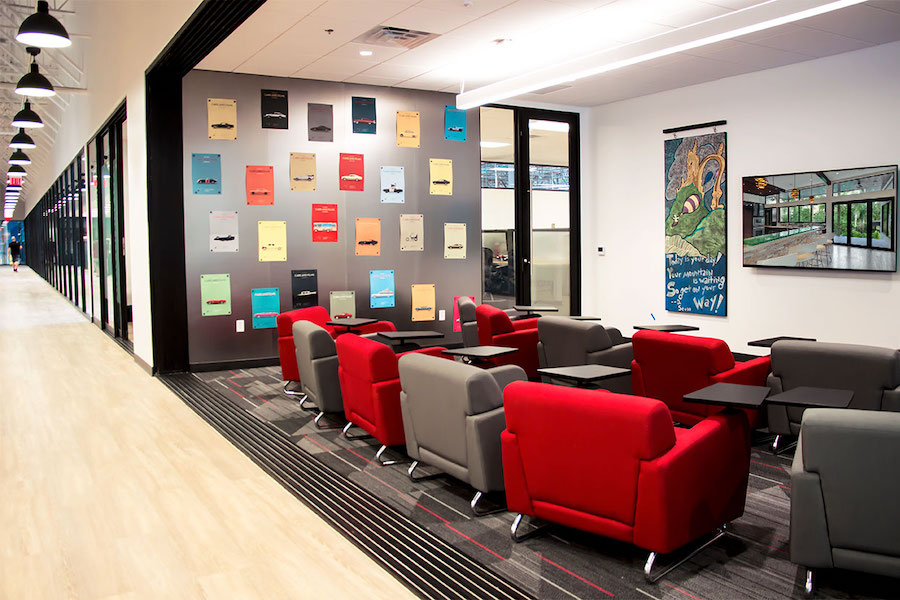
Create More Productive and Engaging Workplaces with Advanced Analytics
Insights from Data Help Create More Adaptive Workplaces
As you are aware, this is a data-driven world. Activity data is used everywhere to help shape products, cities, experiences, and just about everything you can think of. Sensor and GPS technology, software interfaces, and smartphones are the catalysts for much of it, but in the workplace, there are other methods for collecting information and gaining insights.
For instance, companies have used occupancy sensors for years to understand building usage patterns better, manage capacity planning, and create more energy-efficient environments. In today’s hybrid work environments, they are even more useful. Now, companies can measure how much to stock the snack areas based on heat maps showing the space's usage. Similarly, companies can also gauge the use of attractive common areas and other perks. Armed with data, they make better decisions on the usage of space, specific facilities, and plan for future needs.
Nowhere is data more useful than in the planning for meeting and collaboration spaces. Today’s systems measure how much rooms are used, what equipment, how many people are in a meeting, and more. With hybrid work environments, the future for balancing in-office versus remote work is being defined in real-time. With advanced workplace analytics, a company in Scottsdale or anywhere in the world can study usage and create more adaptable and optimized environments. Keep reading below to learn more about how analytics can shape your workplace.
SEE ALSO: Use Workplace Analytics to Manage Your Meeting Rooms
Baked in Analytics
Modern room scheduling systems tell a good story about meeting room usage. They report how many people were invited, whether the meeting got moved or canceled, whether they changed rooms for equipment or space considerations, and more. Plus, with today’s rooms powered by collaboration platforms like Zoom and Microsoft teams, you get more data. Was video used? Screen sharing? How many remote people attended?
Interestingly, even before the COVID pandemic that accelerated hybrid work, Density.io research (largely based on occupancy sensor data) found that 36% of meeting rooms were occupied by only one person. Meetings between two and four people represented 40% of all meetings, and 85% of meetings had fewer than seven attendees. This data might be skewed by the companies that use the sensor platform and company culture dynamics for meetings. Still, it correlates with what we’ve seen: many companies think they know how their meeting spaces are used, but the data says otherwise. And the data also suggests how to plan for collaboration space in the future.
Collecting Experience Data
No doubt you are familiar with, and perhaps annoyed by, the little experience rating that Zoom, Google, and other collaboration platforms ask you to fill in after every video call. Is it trivial or important? It’s a lot of data over many sessions, but it can indicate trends. Is the video and audio quality up to par? Was it easy to get everyone connected in the meeting? The additional feedback sometimes asked for provides insights into how to improve the service.
This data can be collected on physical meeting room systems too. Custom menus can be developed on systems like Crestron and Zoom Rooms to gauge user experience right after the meeting ends. For example, you can design a menu where attendees rate the meeting experience with a number or automatically generate emails to be sent to attendees with a short questionnaire.
Designing More Adaptable Workplaces
Analytics can suggest many changes to your spaces. Perhaps your product development team collaborates more in the office than your sales teams. The product teams may need larger rooms. Other parts of your organization may only need spaces capable of holding four-to-six people. If more of these teams are remote than in the office, you’ll need meeting spaces that may be designed more equitably, making both remote and in-office staff feel equally comfortable participating. This design changes everything about your spaces, from the layout to display choices to microphone/audio systems to cameras. Plus, you may need AV systems that quickly transition from a four-person meeting to one with 20.
Does all this sound like a huge challenge? We can help. Level 3 Audiovisual is an Arizona-based national managed services provider helping organizations of all sizes in Scottsdale and across the U.S. design, deploy, and manage AV systems and infrastructure. Get started by reaching out to Level 3 Audiovisual here or click the chat box below to connect instantly. We look forward to working with you.

